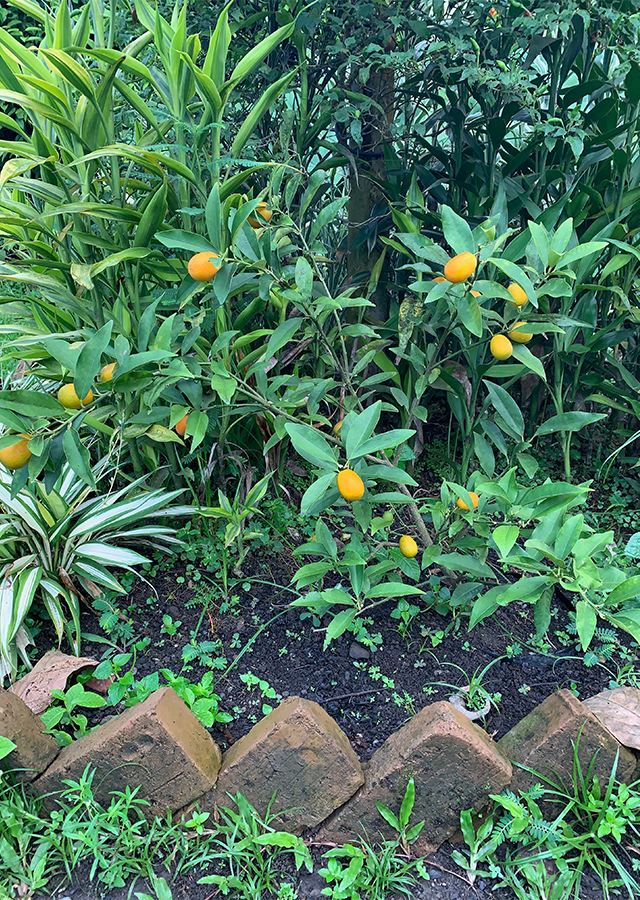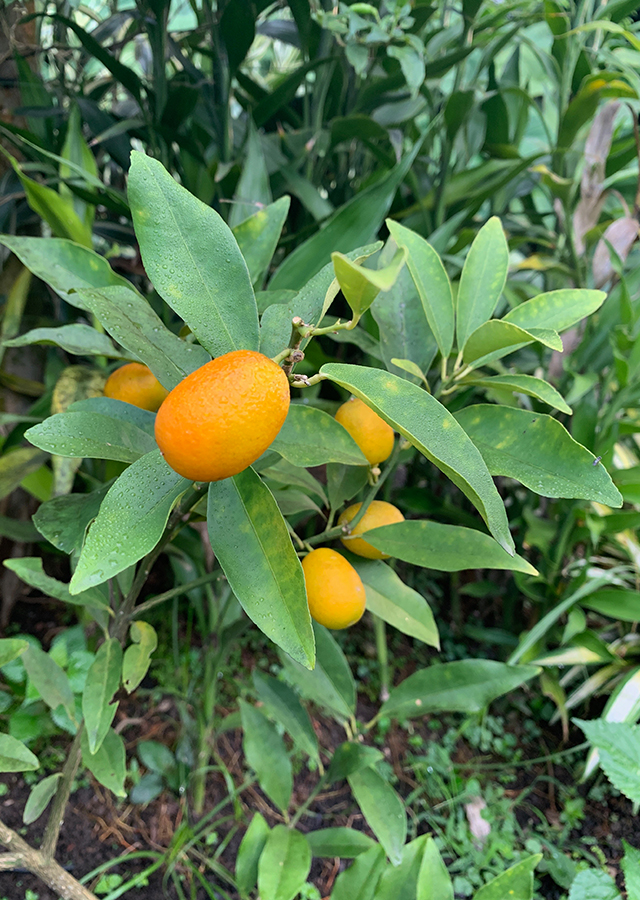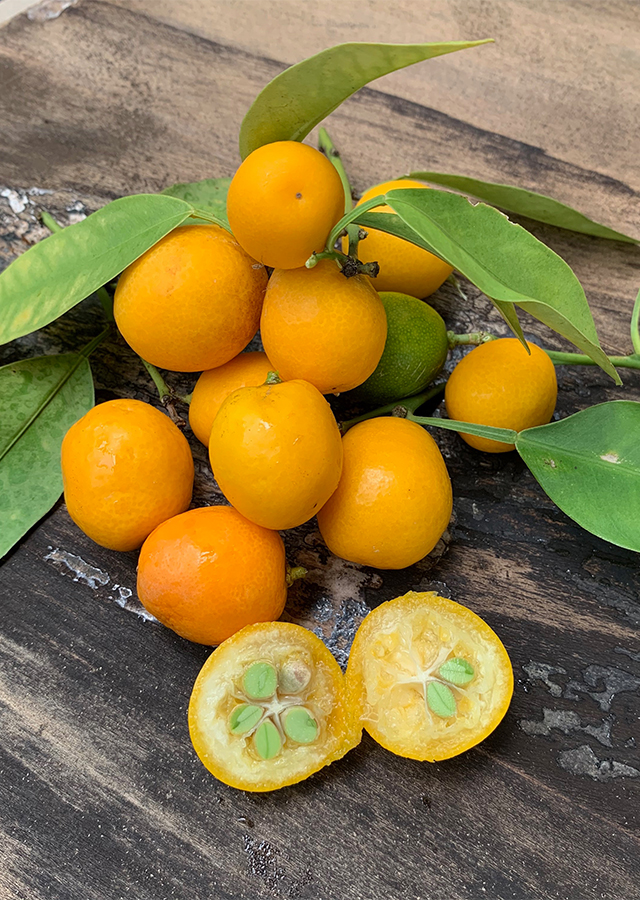Round Kumquat
Citrus japonica Thunb.
Rutaceae
Location in our garden
Orchard



Synonym
Atalantia hindsii (Champ. ex Benth.) Oliv.
Citrus hindsii (Champ. ex Benth.) Govaerts
Citrus inermis Roxb.
Habitus
Shrubs. A slow-growing, prickly, evergreen shrub or small tree with a dense crown, reaching a height of 3 - 4 m
Part Used
Leaves
Fruit
Growing Requirements
Full Sunshine
Habitat
Roadside
Shrublands
Terrestrial
Overview
Citrus japonica is a species originating from China.The plant is cultivated for its fruit in many areas of China and Japan, as well as in several other warm temperate to tropical areas. It is also grown as an ornamental and as a hedge.
Vernacular Names
Quinoto (Spanish), Kumquat a fruits ronds (French), Zwergpommeranzenbaum (German), Kumquat a frutto tondo (Italian).
Agroecology
Succeeds in a range of climates from warm temperate to subtropical and at moderate to higher elevations in the tropics. It grows best in areas where annual daytime temperatures are within the range 26 - 35 °C, but can tolerate 12 - 40 °C. It prefers a mean annual rainfall in the range 1,100 - 1,500 mm, but tolerates 700 - 4,000 mm. Prefers a moderately heavy loam with a generous amount of compost and sand added and a very sunny position. Prefers a pH in the range 6.5 - 7.5, tolerating 6 - 8.
Morphology
- Roots - taproot.
- Stems - much branched, spines vary, up to 5 cm on young growth but some only a few mm on flowering shoots.
- Leaves - arranged alternately along the stem and are lanceolate in shape with a dentate leaf margin.
- Flowers - The 5-petalled flowers are white and fragrant and are borne in clusters or as a single flower.
- Fruits - small in size and ranges in shape from globose, obovate, round to oblong. It turns orange when ripe. The fruit is said to be sweet and acidic to taste.
- Seeds - ovoid, mucronate apex, smooth seed coat, embryo sometimes many, cotyledons are green.
Cultivation
Propagated by seeds - best sown as soon as it is ripe in a warm airy position in a container. When they are large enough to handle, prick out the seedlings into individual pots and grow them on until they are large enough to plant out in their permanent positions.
Chemical Constituents
Essential oils (contain four monoterpenes namely limonene, α-myrcene, α-pinene and sabinene; and two sesquiterpenes, namely d-germacrene and bicy-clogermacrene), phenolic acid (p-hydroxybenzoic acid, vanillic acid, pro-tocotechnic acid, chlorogenic acid, synaptic acid, gallic acid, ferulic acid, caffeic acid), flavonoids (apigenin 7-glucoside).
Traditional Medicinal Uses
- The plant is antiphlogistic, antivinous, carminative, deodorant, stimulant.
- The leaves and fruit contain an essential oil, whilst the fruit also contains sugars and organic acids.
- The fresh fruit is antitussive and expectorant - in Vietnam it is steamed with sugar candy and used in the treatment of sore throats.
- It is said to be very good for infants.
Part Used
Reference Sources
- Fern, Ken. Useful Tropical Plats. (2021). Citrus japonica. http://tropical.theferns.info/viewtropical.php?id=Fortunella+japonica. 05-01-22.
- Cabi. Citrus japonica. https://www.cabi.org/isc/datasheet/24288. 05-01-22.
- Flora & Fauna Web. Citrus japonica. https://www.nparks.gov.sg/florafaunaweb/flora/6/0/6087. 05-01-22.
- Ecosostenibile. Citrus japonica. https://antropocene.it/en/2019/01/22/citrus-japonica/. 05-01-22.

